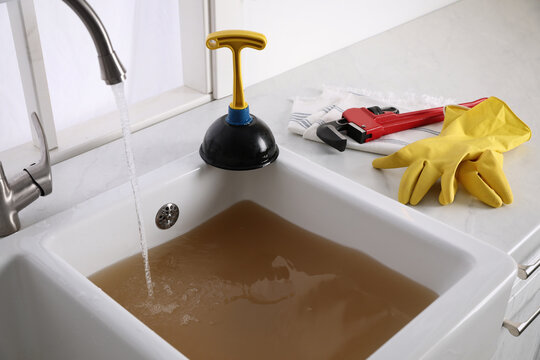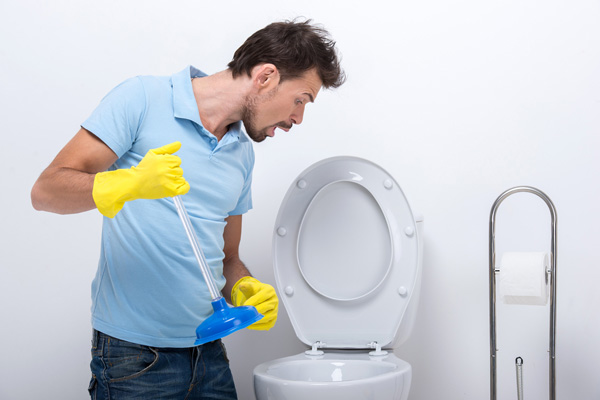Improving Plungers and Drain Cleaner: Pro Methods
Improving Plungers and Drain Cleaner: Pro Methods
Blog Article
This article on the next paragraphs in relation to How to Use a Plunger to Unclog a Toilet or Drain is especially remarkable. Read it for your own benefit and decide what you think of it.

Intro
Appropriate maintenance of family drains is essential for stopping clogs and making certain smooth water flow. One of the secret devices in every property owner's toolkit is the plunger, alongside numerous drain cleansers designed to deal with stubborn obstructions efficiently. This write-up checks out how to use bettors and drainpipe cleansers efficiently to keep your drains pipes moving freely.
Section 1: Comprehending Bettors
Sorts of Plungers
There are numerous sorts of bettors available, each designed for different types of drains and blocks. One of the most common types include mug bettors, flange bettors, and accordion bettors.
How Plungers Work
Plungers service the concept of developing stress and suction to displace obstructions. When properly applied over a drain, they create a vacuum that can pull out particles or separate clogs.
Picking the Right Bettor
Selecting the right bettor relies on the sort of drainpipe and the nature of the blockage. Cup bettors are suitable for sinks and tubs, while flange plungers are much better matched for bathrooms as a result of their layout.
Common Errors with Plungers
Staying clear of these blunders makes certain efficient plunging: improper seal around the drain, inadequate force, and not clearing surrounding debris.
Section 2: Utilizing Plungers Effectively
Preparation
Before plunging, make sure the bettor covers the drainpipe entirely and creates a tight seal. Clear any kind of visible particles around the drainpipe opening.
Method
Beginning with gentle plunging activities to build suction. Boost stress progressively, using a consistent rhythm. Repeat as necessary up until the drainpipe gets rid of.
Troubleshooting Tips
If plunging doesn't function, attempt adjusting the seal, applying petroleum jelly for a much better seal, or making use of a various type of plunger.
Section 3: Understanding Drain Cleansers
Kinds Of Drain Cleansers
Drain pipes cleansers can be chemical or enzymatic. Chemical cleaners utilize strong chemicals to dissolve clogs, while enzymatic cleaners make use of all-natural enzymes to break down raw material.
Exactly How Drain Cleansers Work
Chemical cleansers respond with blockages to dissolve them, while enzymatic cleansers break down natural materials like hair and grease without damaging pipes.
Safety Factors to consider
Constantly use gloves and eye defense when utilizing chemical drainpipe cleansers. Guarantee ample air flow and follow supplier directions very carefully.
Eco-Friendly Alternatives
Think about making use of vinegar and cooking soft drink or enzyme-based cleansers for eco-friendly choices that are more secure for pipes and the setting.
Section 4: Utilizing Drain Cleaning Company Efficiently
Application Strategies
Put chemical cleansers directly into the drainpipe opening. Allow them to benefit the suggested time prior to flushing with hot water. Chemical cleaners need to rest overnight.
Safety measures
Avoid blending various kinds of cleansers, as this can produce hazardous fumes. Never utilize chemical cleansers along with a plunger, as splashing can happen.
Managing Persistent Obstructions
For consistent clogs, consider making use of a pipes serpent or calling a specialist plumber to prevent damages to pipes.
Verdict
In conclusion, comprehending how to make use of plungers and drain cleaners properly is necessary for keeping healthy pipes systems. By choosing the right tools and strategies, house owners can deal with small obstructions and stop major plumbing issues down the line.
How to Use a Plunger to Unclog a Drain
The humble plunger is a simple yet effective tool for breaking clogs in sinks, tubs and toilets. This handy tool is easy to use. You can make the most of its power if you understand how it works. Ready to dive in? Here’s what you need to know.
Safety First!
Never use a plunger with drain chemicals. Water will splash as you work, and the chemicals can spatter, burning skin and eyes. It’s a good idea to use rubber gloves and wear safety goggles when you work on a clog.
Choose the Right Tool for the Job
Plungers come in two different styles. Sinks, bathtubs and showers require a cup plunger. Like its name suggests, the rubber end is shaped like a cup. Use a flange plunger on toilets. These plungers have a rubber funnel extending from the cup. A plunger needs to be big enough to cover the drain.
Ready, Set, Plunge!
Coat the rim: Coat the plunger rim with petroleum jelly. This helps make a better seal.
Block outlets: Hold a wet rag over nearby outlets such as the overflow vent or the drain in a second sink.
Release air: Insert the plunger at an angle into the water. Water will displace air in the cup. A water-filled cup is more forceful than one filled with air.
Keep the plunger upright: Hold the plunger perpendicular to the drain. Use fast, forceful strokes, but make the first stroke gentle. The first stroke can create a splash if the cup still contains air. Thrust the plunger 15 to 20 times.
Snap off the plunger: The final stroke should be a strong upward motion that ends when the plunger snaps off the drain.
Repeat the process: you may need to repeat this sequence several times. When the water drains away, your work is done. High-five! https://plumbernw.com/blog/how-to-use-a-plunger-to-unclog-a-drain/

Application Strategies
Put chemical cleansers directly into the drainpipe opening. Allow them to benefit the suggested time prior to flushing with hot water. Chemical cleaners need to rest overnight.
Safety measures
Avoid blending various kinds of cleansers, as this can produce hazardous fumes. Never utilize chemical cleansers along with a plunger, as splashing can happen.
Managing Persistent Obstructions
For consistent clogs, consider making use of a pipes serpent or calling a specialist plumber to prevent damages to pipes.
Verdict
In conclusion, comprehending how to make use of plungers and drain cleaners properly is necessary for keeping healthy pipes systems. By choosing the right tools and strategies, house owners can deal with small obstructions and stop major plumbing issues down the line.
How to Use a Plunger to Unclog a Drain
The humble plunger is a simple yet effective tool for breaking clogs in sinks, tubs and toilets. This handy tool is easy to use. You can make the most of its power if you understand how it works. Ready to dive in? Here’s what you need to know.
Safety First!
Never use a plunger with drain chemicals. Water will splash as you work, and the chemicals can spatter, burning skin and eyes. It’s a good idea to use rubber gloves and wear safety goggles when you work on a clog.
Choose the Right Tool for the Job
Plungers come in two different styles. Sinks, bathtubs and showers require a cup plunger. Like its name suggests, the rubber end is shaped like a cup. Use a flange plunger on toilets. These plungers have a rubber funnel extending from the cup. A plunger needs to be big enough to cover the drain.
Ready, Set, Plunge!
Coat the rim: Coat the plunger rim with petroleum jelly. This helps make a better seal. Block outlets: Hold a wet rag over nearby outlets such as the overflow vent or the drain in a second sink. Release air: Insert the plunger at an angle into the water. Water will displace air in the cup. A water-filled cup is more forceful than one filled with air. Keep the plunger upright: Hold the plunger perpendicular to the drain. Use fast, forceful strokes, but make the first stroke gentle. The first stroke can create a splash if the cup still contains air. Thrust the plunger 15 to 20 times. Snap off the plunger: The final stroke should be a strong upward motion that ends when the plunger snaps off the drain. Repeat the process: you may need to repeat this sequence several times. When the water drains away, your work is done. High-five! https://plumbernw.com/blog/how-to-use-a-plunger-to-unclog-a-drain/

I am very fascinated with How to Unclog Your Sink with a Plunger and I'm hoping you enjoyed the new blog post. For those who enjoyed our post plz remember to share it. Thanks a lot for your time. Don't forget to check up our site back soon.
Click Here Report this page